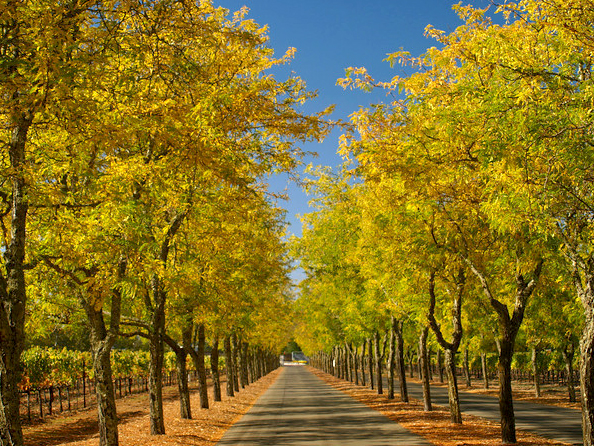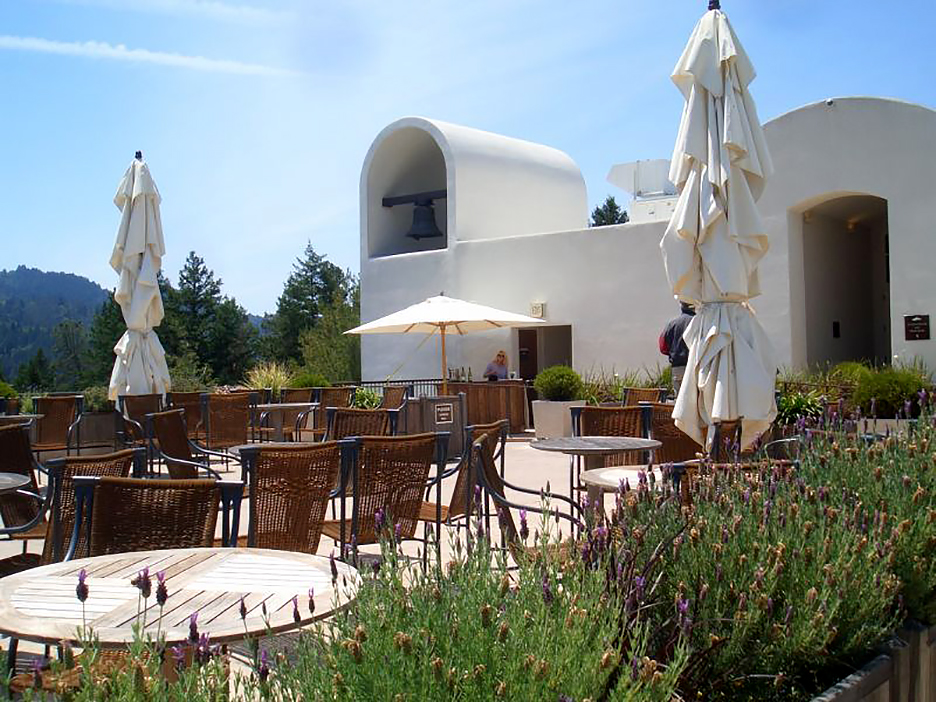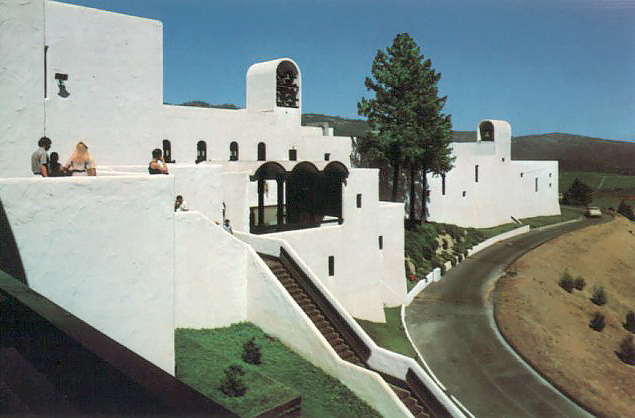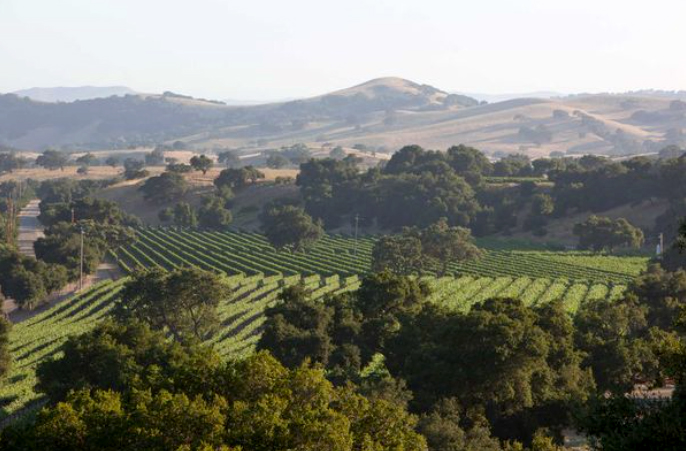Deep ruby color; blueberry, cherry, chocolate on the nose; black plum, blackcurrant, boysenberry, black cherry, savory notes on the palate.
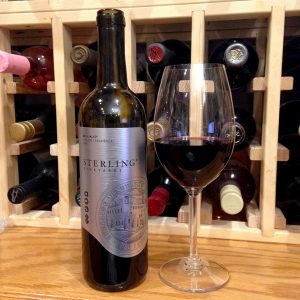
Dry, flirts with off-dry, the ripe fruits can fool you. Fleshy, full bodied; brambly flavors and mellow-but-chewy tannins—benefits from decanting. Smooth and tasty rather than tannic and bold; medium acidity; medium length on the finish where the blackcurrant tang takes center stage. Not particularly complex, but the ripe fruit performs well. Oak is there but not a main element.
Sterling Vineyards began when British international newspaper owner Peter Newton purchased land near Calistoga in Napa Valley in 1964 and established the vineyards. In quick succession, he purchased more land and, in addition to cabernet sauvignon, planted merlot (then virtually unknown in Napa), chardonnay, and sauvignon blanc.
Bottling began in 1969, including California’s first vintage-dated merlot. In 1971, Martin Waterfield—an officer in Newton’s company—designed a Mediterranean-style white stucco winery complex inspired by structures on the Greek island of Mykonos, where Newton once lived. Today, the complex is one of the most-visited in Napa.
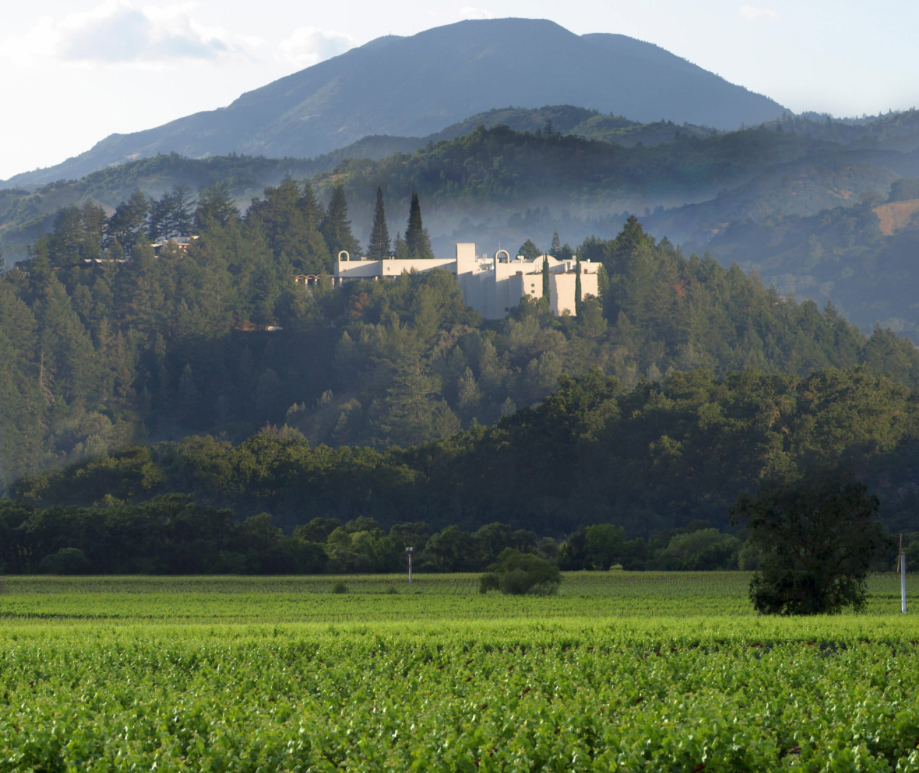
The Newton family sold the winery and vineyards to Coca Cola in 1977. In 1982, Coke sold the operation to Joseph E. Seagram and Sons, and Sterling quickly became the crown jewel of Seagram’s wine efforts. Between 1982 and 2000, Sterling’s yearly sales jumped from less than 60,000 cases to 400,000. Even better, quality improved.
In 2001, Diageo—a United Kingdom drinks conglomerate—purchased Seagram and mixed Sterling into its existing wine business. In 2015, Diageo sold most of its wine business to Treasury Wine Estates, an Australian-based global winemaking and distribution operation that traces its roots to Penfolds Wine and Foster’s Group beer brewers.
Treasury is a major international player in the wine world, making wine in 12 countries, selling more than 35 million cases of wine a year, and generating more than $2 billion in sales. Labels you may recognize beyond Sterling include Stags’ Leap, Beaulieu Vineyard, Beringer, Chateau St. Jean, 19 Crimes, Walking Dead, Greg Norman Estates, Lindeman’s, Wolf Blass, and their flagship—Penfolds.
That history represents lots of changes and marketing directions for Sterling. Treasury tends to focus on commodity wines sold in supermarkets and mass-market liquor-beer-wine stores, which is where Sterling Vineyards largely resides today. This effort is an example that Sterling delivers solid if not spectacular wine at its price points; It is widely available.
Sterling Vineyards Cabernet Sauvignon, Napa Valley 2014 is a satisfying cab with well behaved tannins, acidity, and oak. This doesn’t have faults, it doesn’t have distinctive structure or depth either, which makes it a solid wine for this price. It certainly works as a weekday wine and would shine as the second bottle of an up-market meal. Bright and cheery and good value-for-price pour. Pair with grilled meats and roasts; rare steak; pizza; burgers and sliders; chicken avocado burgers. $24-26
